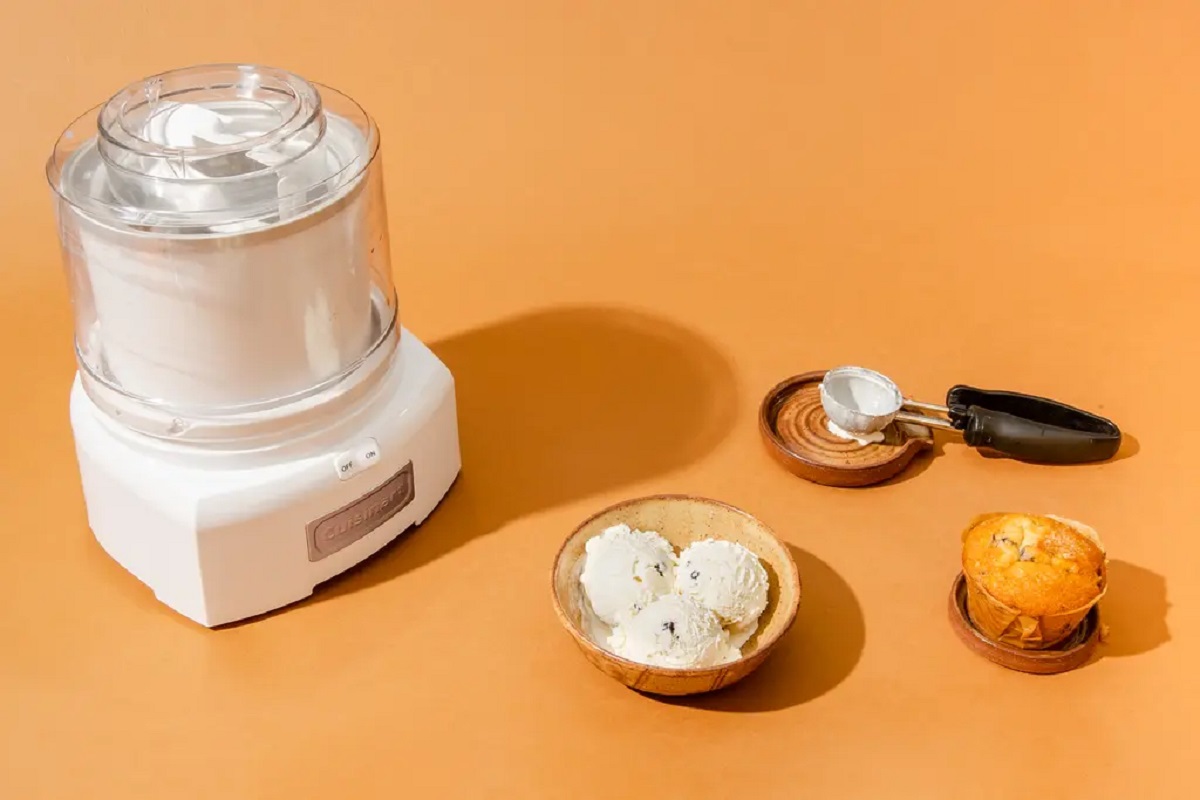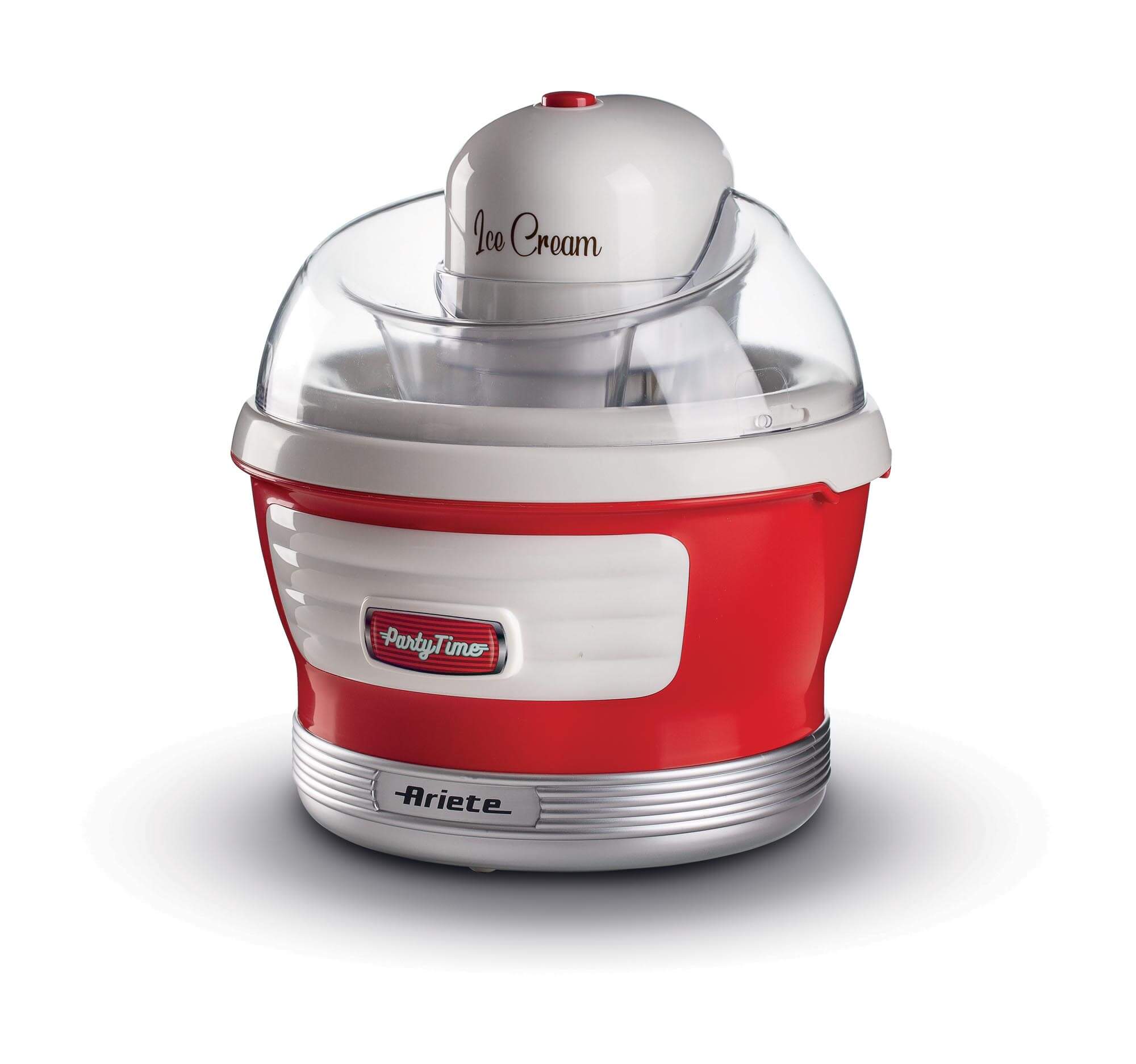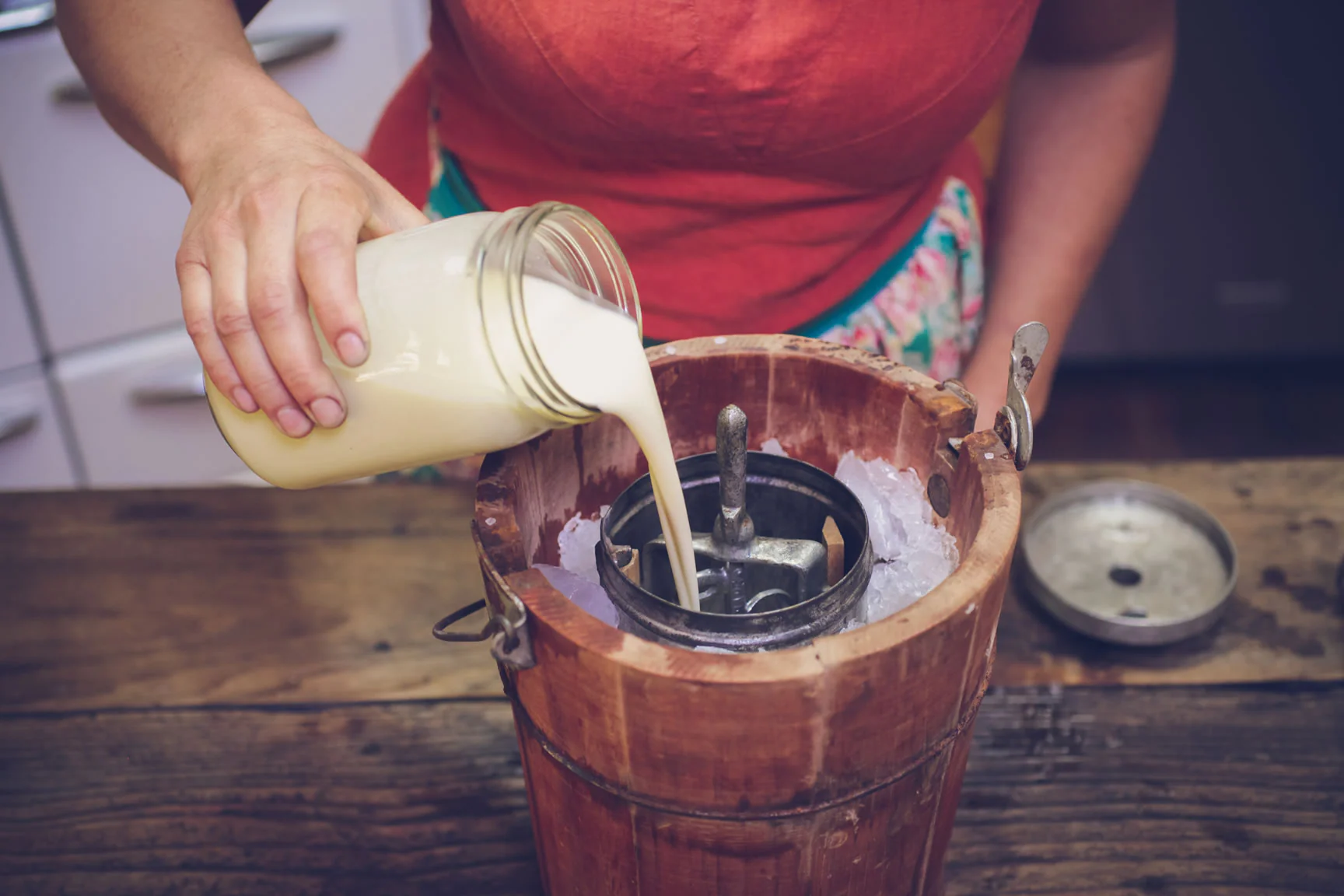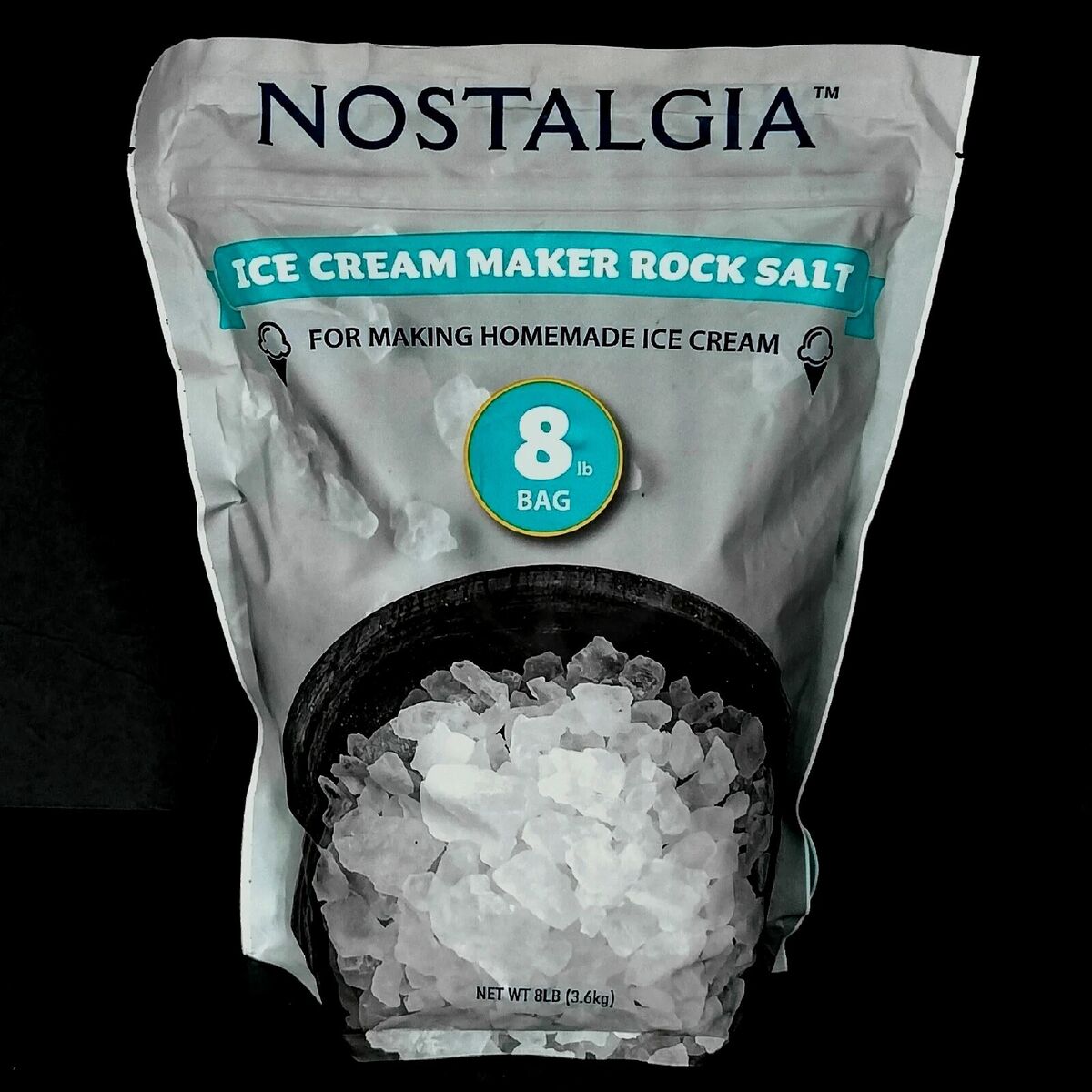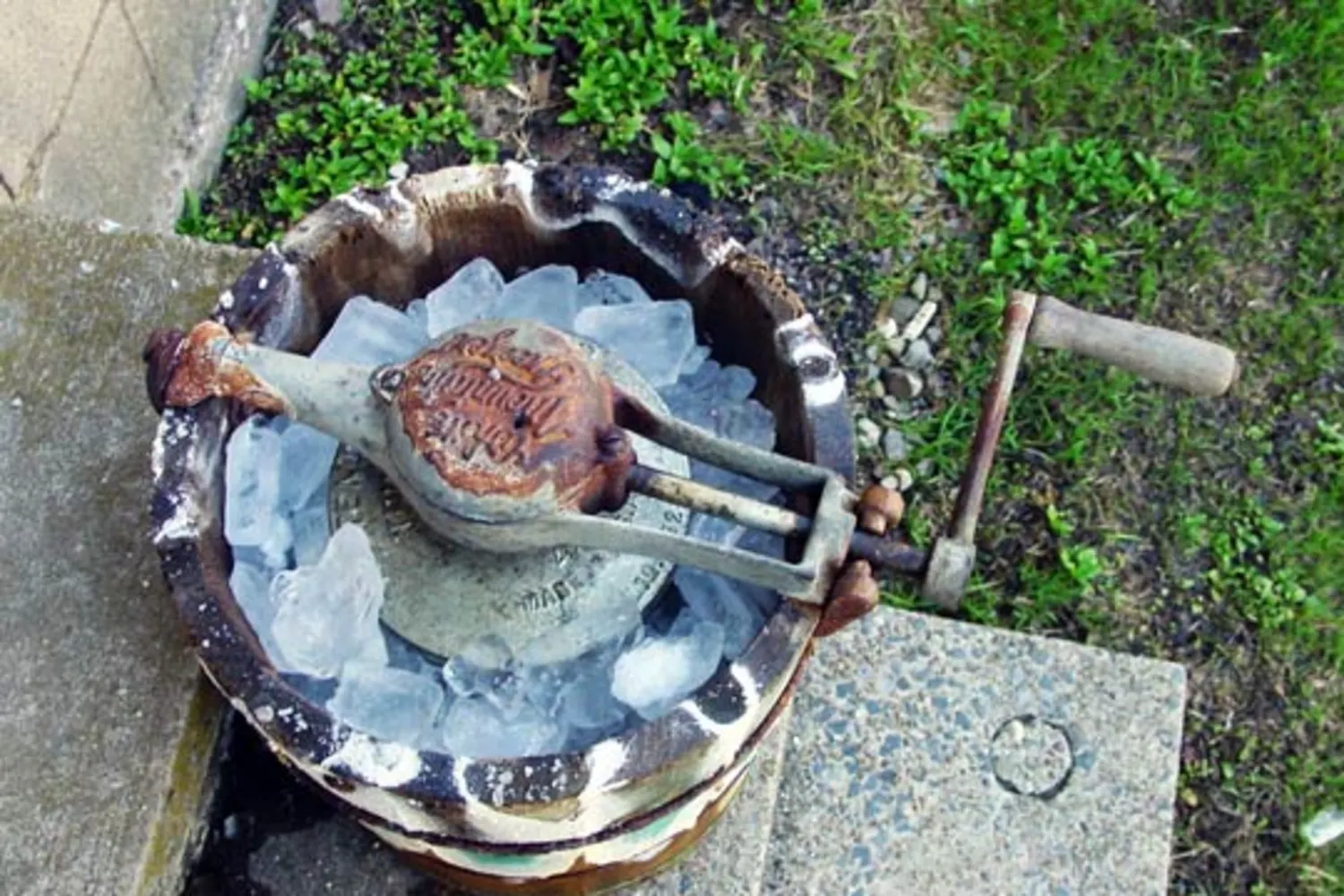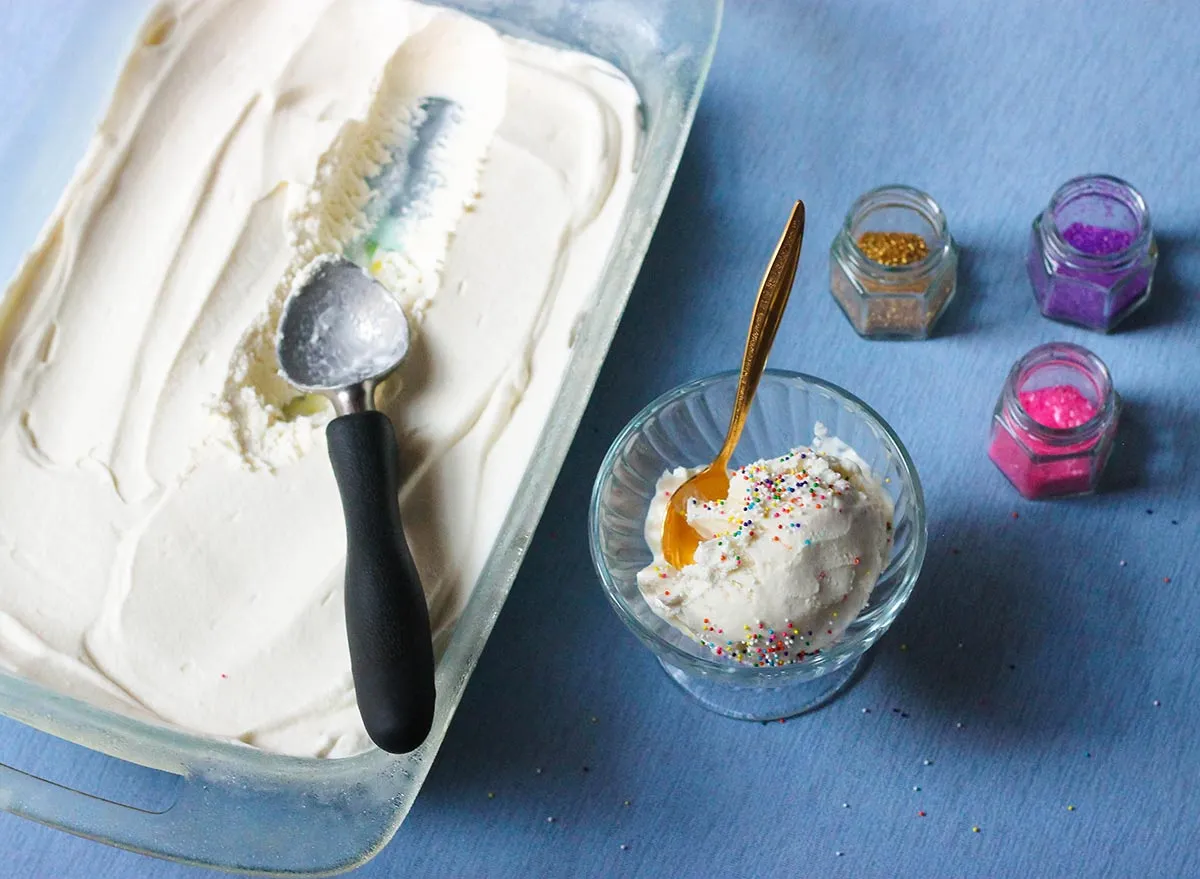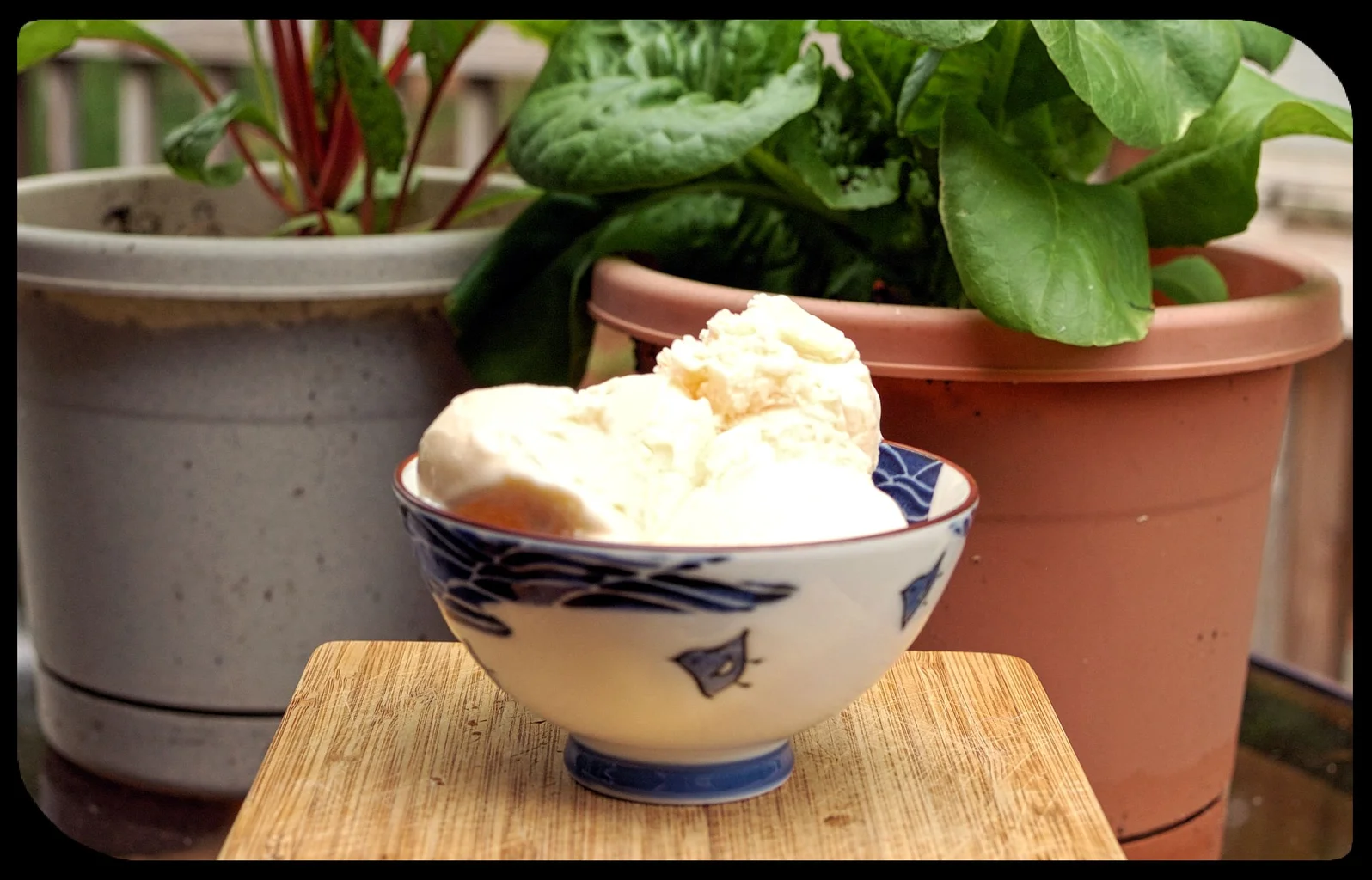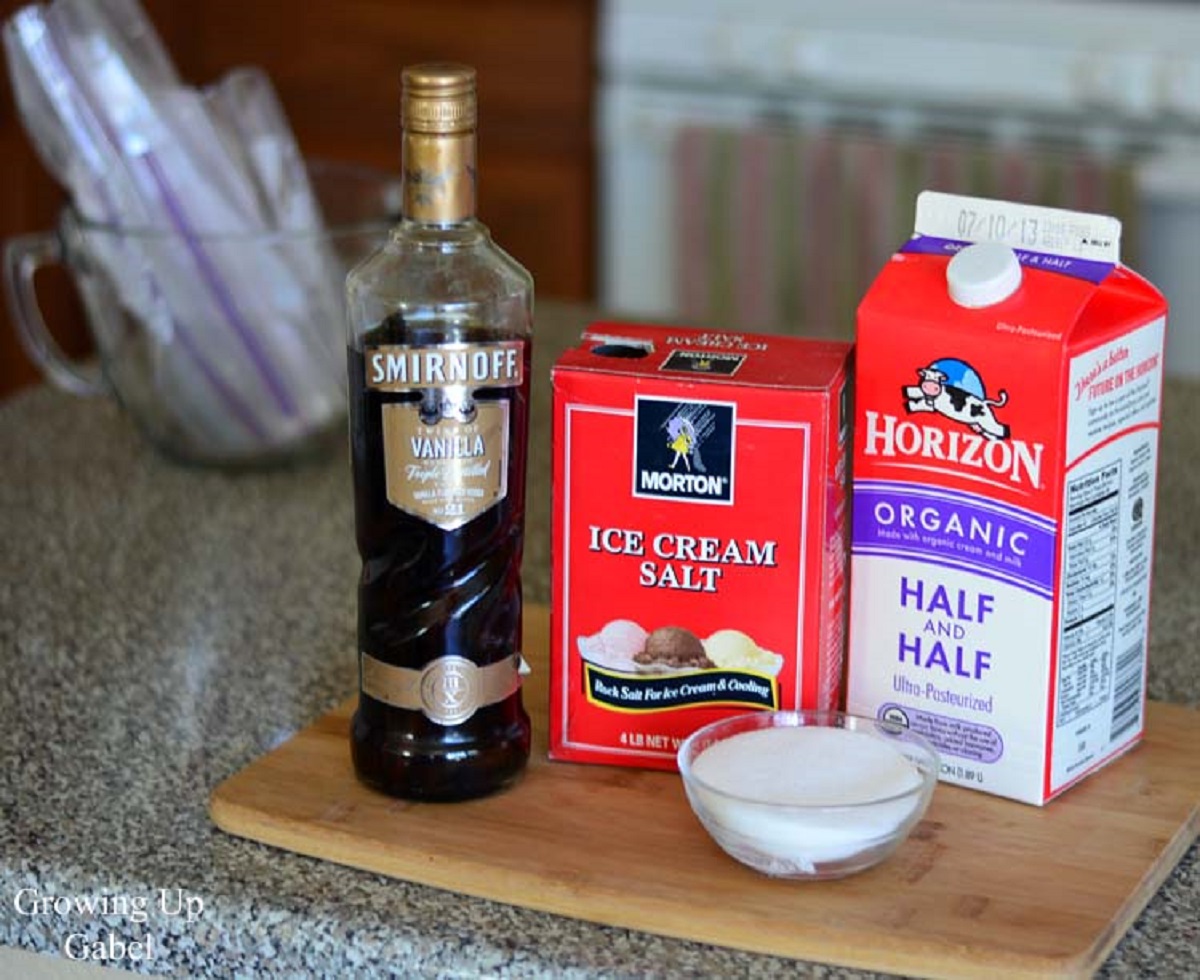Introduction
Indulging in a creamy and delicious scoop of ice cream can be a delightful treat, especially during hot summer days. While most of us enjoy the end result, have you ever wondered about the process behind making that delectable frozen treat? One key ingredient in the ice cream-making process is salt.
In this article, we will delve into the fascinating role that salt plays in creating the perfect batch of homemade ice cream. From understanding its impact on temperature to exploring the science behind the salt and ice combination, we will unlock the secrets of this essential ingredient.
Whether you are new to using an ice cream maker or have been experimenting with various recipes, understanding the importance of salt in the process will help you achieve fantastic results every time.
Buckle up as we embark on this journey to uncover the ways salt enhances the ice cream-making process and produces that creamy, frozen perfection we all love.
What is an Ice Cream Maker?
An ice cream maker is a kitchen appliance specifically designed to create delicious homemade ice cream. It allows you to control the ingredients and customize the flavors to your preference.
These devices typically consist of a freezer bowl or canister, a motorized churn, and a lid. The freezer bowl is pre-frozen before use, which helps in the freezing process of the ice cream mixture. The motorized churn rotates the mixture to incorporate air and prevent the formation of large ice crystals, resulting in a smooth and creamy texture. The lid keeps everything securely in place during the churning process.
Ice cream makers come in various types, including manual crank models and electric machines. Manual crank models involve hand churning the mixture, while electric machines do the work for you with the help of a motor.
With an ice cream maker, you have the freedom to experiment with different flavors, add-ins, and even dietary preferences. Whether you prefer classic vanilla, fruity sorbet, or indulgent chocolate chip, the possibilities are endless with this versatile appliance.
Now that we have a better understanding of what an ice cream maker is, let’s explore the role that salt plays in the ice cream-making process.
The Role of Salt in the Ice Cream Making Process
When it comes to making ice cream, salt serves a crucial role in ensuring that the freezing process happens efficiently. It might seem counterintuitive to add salt to ice cream mix, but it actually helps lower the temperature of the mixture, allowing it to freeze properly.
The addition of salt to the ice surrounding the ice cream mixture creates a brine solution. This brine solution has a lower freezing point than pure water, which leads to a significantly lower temperature inside the ice cream maker.
The lower temperature is essential for freezing the ice cream mixture, as it allows the liquid to solidify while incorporating air to create a creamy texture. Without the help of salt, the ice cream mixture would take much longer to freeze and may not achieve the desired consistency.
To create the brine solution, rock salt or ice cream salt is commonly used. This type of salt is coarser and doesn’t dissolve quickly, making it perfect for generating the necessary brine solution and maintaining a consistently low temperature. Ordinary table salt can also be used, although it may dissolve more quickly and require larger quantities.
While salt plays a vital role in lowering the temperature, it does not directly affect the flavor of the ice cream. The flavor primarily comes from the ingredients you use, such as vanilla extract, cocoa powder, or fruit puree. The salt’s main purpose is to enable the freezing process.
Now that we understand the role of salt in the ice cream-making process, let’s dive deeper into how salt actually lowers the temperature inside the ice cream maker.
How Does Salt Lower the Temperature?
To understand how salt lowers the temperature inside an ice cream maker, we need to delve into a scientific phenomenon called freezing point depression. Freezing point depression occurs when a substance is dissolved in a liquid, reducing its freezing point.
When salt is added to water, it dissolves and breaks down into ions, specifically sodium ions (Na+) and chloride ions (Cl-). These ions disrupt the structure of the water molecules, making it more difficult for them to form solid ice crystals. As a result, the freezing point of the water decreases.
The addition of salt to the ice surrounding the ice cream mixture creates a brine solution. This brine solution has a lower freezing point than pure water, typically around -6 to -14 degrees Celsius (20 to 7 degrees Fahrenheit). In comparison, the freezing point of pure water is 0 degrees Celsius (32 degrees Fahrenheit).
By creating a brine solution with a lower freezing point, the salt effectively lowers the temperature inside the ice cream maker. This colder temperature allows the ice cream mixture to freeze more rapidly, resulting in a smoother and creamier texture.
It’s important to note that using too much salt can be counterproductive. While a sufficient amount is needed to lower the freezing point, excessive salt can actually slow down the freezing process. Finding the right balance is key to achieving the optimal freezing temperature for your ice cream mixture.
Now that we understand the science behind salt and its role in lowering the temperature, let’s explore the benefits of adding salt to the ice cream maker.
The Science Behind Salt and Ice
When salt is added to ice, it creates a unique freezing environment that goes beyond the freezing point depression caused by salt in water. This phenomenon is due to the colligative properties of solutions.
Colligative properties are characteristics of a solution that depend on the number of solute particles present, rather than the specific nature of the solute. In the case of salt and ice, the addition of salt increases the number of solute particles in the solution.
When salt is added to the ice surrounding the ice cream mixture, it forms a concentrated brine solution. This brine solution has a lower freezing point than both pure water and salty water without ice. By lowering the freezing point, the mixture of ice and salt can reach even colder temperatures than just ice alone.
The process works by the principles of freezing point depression and the concept of latent heat. As the ice begins to melt in the presence of salt, it requires heat energy to break the molecular bonds and change from a solid to a liquid state. This heat energy, known as latent heat, is absorbed from the surroundings, including the ice cream mixture.
By absorbing heat from the ice cream mixture, the salt and ice combination rapidly cools down the mixture, allowing it to freeze more quickly. This quick freezing process prevents the formation of large ice crystals, resulting in a smoother and creamier texture.
The science behind salt and ice is a fascinating phenomenon that makes homemade ice cream possible. By creating a unique freezing environment with lower temperatures and rapid cooling, the salt and ice combination plays a vital role in turning liquid ice cream mixture into a frozen delight.
Now that we have explored the science behind salt and ice, let’s move on to discover the benefits of adding salt to the ice cream maker.
Benefits of Adding Salt to the Ice Cream Maker
Adding salt to the ice cream maker offers several key benefits that contribute to the successful creation of delicious homemade ice cream.
1. Faster Freezing: The addition of salt to the ice in the ice cream maker lowers the temperature inside the machine. This enables the ice cream mixture to freeze more rapidly, reducing the time it takes to achieve the desired consistency. With faster freezing, you can satisfy your ice cream cravings in a shorter amount of time.
2. Smoother Texture: The rapid freezing process facilitated by the salt and ice combination helps create smaller ice crystals in the ice cream mixture. This results in a smoother and creamier texture, ensuring a more enjoyable eating experience. Say goodbye to icy texture and hello to velvety smoothness.
3. Creamier Consistency: The incorporation of air during the churning process, combined with the lower temperature achieved with salt, helps create a lighter and fluffier ice cream consistency. The resulting ice cream is less dense and more indulgent, making it a true delight to savor.
4. Enhanced Flavor Distribution: By facilitating faster freezing and smaller ice crystals, adding salt to the ice cream maker ensures that the flavors of your chosen ingredients are evenly distributed throughout the mixture. Each bite will be bursting with the delectable taste you intended, creating a truly satisfying treat.
5. Customization Options: Using salt in the ice cream maker allows for greater flexibility in experimenting with flavors and mix-ins. From classic combinations to unique and inventive creations, the salt-powered freezing process provides a solid foundation for your culinary creativity.
6. Consistent Results: Incorporating salt in the ice cream-making process helps maintain a consistently low temperature, ensuring reliable and repeatable results. You can be confident that your homemade ice cream will have the same amazing texture and taste every time you use the ice cream maker.
By leveraging the benefits of adding salt to the ice cream maker, you can elevate the overall quality of your homemade ice cream and impress your friends and family with your culinary skills.
Now that we have explored the benefits of adding salt to the ice cream maker, let’s move on to some tips for using salt effectively in your ice cream-making endeavors.
Tips for Using Salt in the Ice Cream Maker
As you embark on your ice cream-making journey with the help of salt, here are some practical tips to ensure optimal results:
1. Use the Right Salt: Opt for rock salt or ice cream salt, as these are coarser and dissolve more slowly than table salt. However, if table salt is your only option, it can still be used effectively.
2. Pre-chill the Ice Cream Maker: To promote efficient freezing, pre-chill the ice cream maker and the freezer bowl before adding the ice and salt. This will help maintain a consistently low temperature throughout the freezing process.
3. Layer Ice and Salt: When adding the ice and salt to the ice cream maker, alternate layers of ice and salt. This will ensure better distribution of the cold and speed up the freezing process.
4. Don’t Overfill the Freezer Bowl: Leave some room in the freezer bowl for the ice cream mixture to expand as it freezes. Overfilling can lead to overflow and hinder the freezing process.
5. Monitor the Salt Levels: Keep an eye on the salt levels throughout the churning process. If the ice cream is not freezing properly, you may need to add more salt to maintain a lower temperature.
6. Follow the Recipe Guidelines: Different ice cream recipes may require varying amounts of salt and freezing times. Be sure to follow the guidelines provided in your specific recipe for the best results.
7. Experiment with Flavors: Take advantage of the flexibility that salt-powered freezing provides and get creative with your ice cream flavors and mix-ins. Don’t be afraid to try out unique combinations and surprise your taste buds.
8. Clean and Store the Ice Cream Maker Properly: After enjoying your homemade ice cream, make sure to clean the ice cream maker thoroughly and store it in a dry place. This will help maintain its performance and prolong its lifespan.
By following these tips, you’ll be well on your way to creating delicious homemade ice cream with the help of salt and your trusty ice cream maker.
Now that we’ve covered the tips for using salt effectively, let’s wrap up with a brief recap of what we’ve learned.
Conclusion
Through this exploration of the role of salt in the ice cream-making process, we have gained a deeper understanding of how this simple ingredient can significantly enhance the quality of homemade ice cream. By lowering the temperature and promoting faster freezing, salt helps create a smoother texture, creamier consistency, and more even flavor distribution.
Using an ice cream maker in combination with salt allows you to have greater control over the freezing process and customize your ice cream according to your taste preferences. Whether you prefer classic flavors or enjoy experimenting with unique combinations, the benefits of adding salt in the ice cream maker are undeniable.
Remember to use the right type of salt, pre-chill your ice cream maker, and layer the ice and salt properly to ensure optimal freezing conditions. By following these tips and guidelines, you can master the art of homemade ice cream and impress your friends and family with your culinary skills.
So, the next time you indulge in a scoop of perfectly creamy and delicious homemade ice cream, take a moment to appreciate the role that salt has played in creating that frozen perfection. Enjoy the refreshing and satisfying treat knowing that you have unlocked the secrets of a flawlessly made batch of ice cream.
Now, it’s time to roll up your sleeves, gather your ingredients, and start creating your own homemade ice cream using the magical combination of salt and your trusty ice cream maker. Prepare to indulge in irresistible frozen delights that will bring joy and satisfaction on any day of the year.







